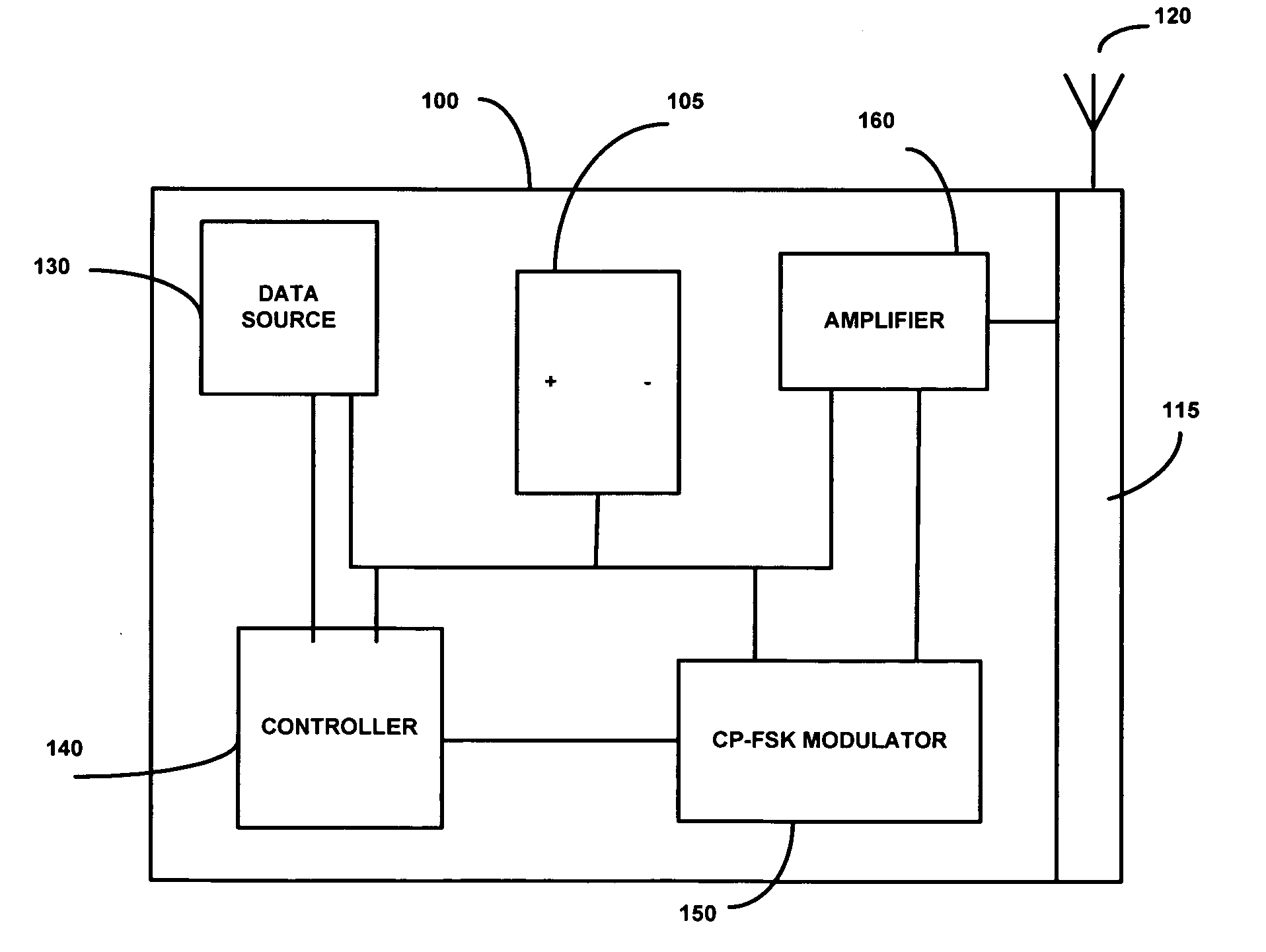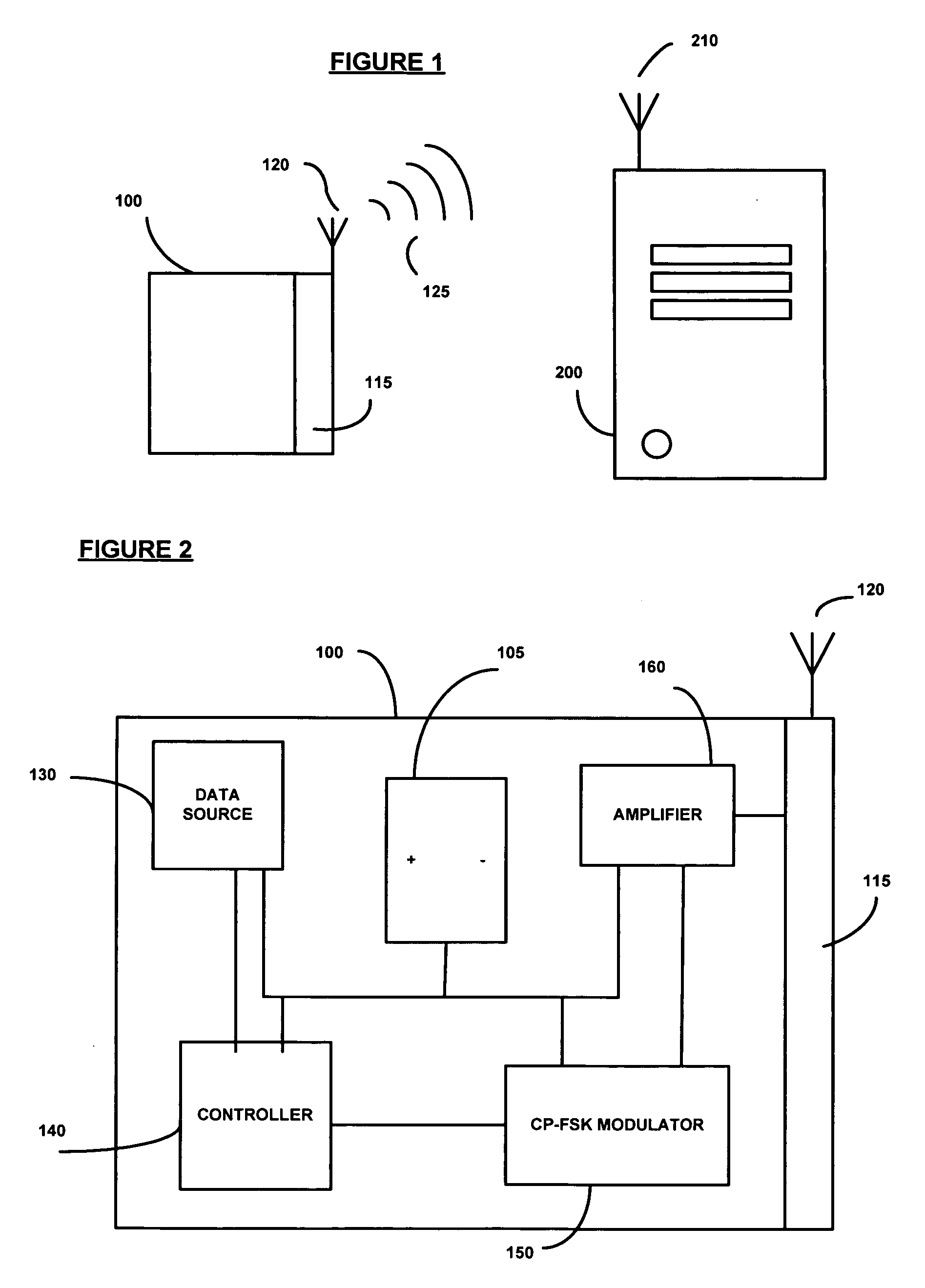Methods and systems for frequency shift keyed modulation for broadband ultra wideband communication
- Summary
- Abstract
- Description
- Claims
- Application Information
AI Technical Summary
Benefits of technology
Problems solved by technology
Method used
Image
Examples
Embodiment Construction
[0036] The following description is intended to convey a thorough understanding of the present invention by providing a number of specific embodiments and details involving data transmission in a WB or a UWB communication channel. It is understood, however, that the present invention is not limited to these specific embodiments and details, which are exemplary only. It is further understood that one possessing ordinary skill in the art, in light of known systems and methods, would appreciate the use of the invention for its intended purposes and benefits in any number of alternative embodiments, depending upon specific design and other needs.
[0037]FIGS. 1-5 illustrate various exemplary mechanisms for processing and transmitting data in a WB or a UWB communication system. In at least one embodiment, a transmitter may be in communication with a receiver over a single wireless WB and / or UWB channel. For the purposes of this disclosure, the term UWB channel will be used to describe, by...
PUM
 Login to View More
Login to View More Abstract
Description
Claims
Application Information
 Login to View More
Login to View More - R&D
- Intellectual Property
- Life Sciences
- Materials
- Tech Scout
- Unparalleled Data Quality
- Higher Quality Content
- 60% Fewer Hallucinations
Browse by: Latest US Patents, China's latest patents, Technical Efficacy Thesaurus, Application Domain, Technology Topic, Popular Technical Reports.
© 2025 PatSnap. All rights reserved.Legal|Privacy policy|Modern Slavery Act Transparency Statement|Sitemap|About US| Contact US: help@patsnap.com



